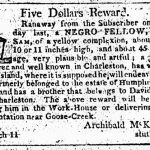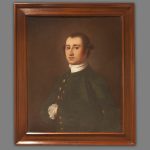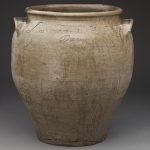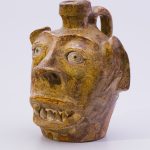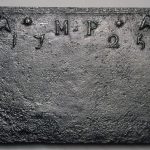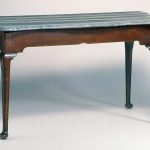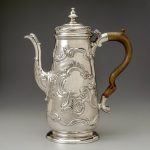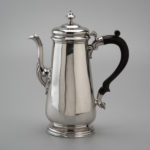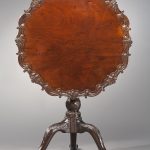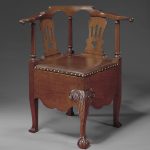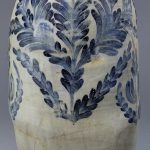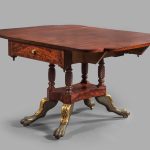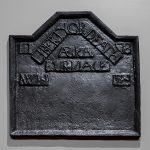Coffeepot
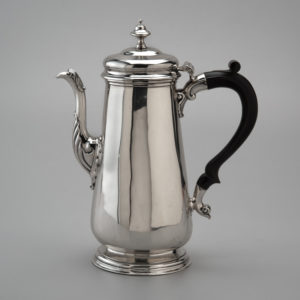
Coffeepot
Alexander Petrie (c. 1707–1768) and Shop
Charleston, South Carolina
1750–1760
Silver and wood
HOA: 10 3/8”, WOA: 9”, DOA: 4”
Gift of Frank L. Horton (2507)
The castings of the hinge, handle sockets, spout, and foot ring are nearly identical to those on three other extant Petrie coffeepots, including a highly-ornamented example in the MESDA collection. Petrie constructed the bodies of his coffeepots out of sheet silver, which he joined in a vertical seam at the handle. This production method was uncommon in America for this time period, as the use of sheet silver did not come in to wide use until the late-eighteenth centuy; however, British silversmiths had adapted this method by the early eighteenth century. Petrie’s adoption of emerging technology was a testiment to his Scottish training and Charlestonian’s taste for up-to-date British fashion.
Petrie retired in July 1765, keeping his silversmithing tools but selling the stock of his shop to fellow Charleston silversmith Jonathan Sarrazin (w. 1754-c. 1790). Following Petrie’s death Sarrazin also acquired Abraham, Petrie’s enslaved silversmith, for the large sum of £810. Abraham was a rare but not unique southern artisan; a small number of other enslaved silversmiths have been documented working in Charleston, Richmond, and Annapolis during the eighteenth century.
Learn more about this object in MESDA’s online collection catalog.

